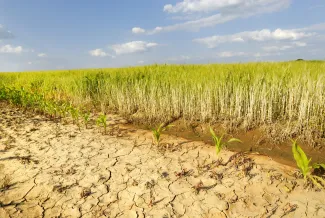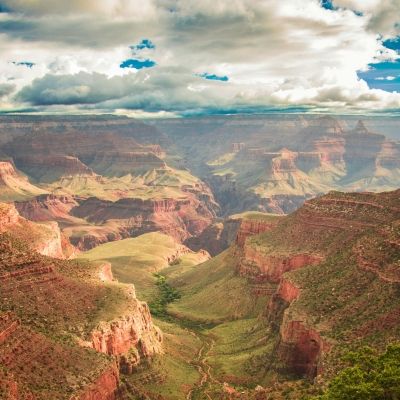Drought makes heat waves hotter but less deadly
Heat waves and droughts cause acute mortality and damage worldwide. Until now it has been assumed that this mortality is exacerbated because a heat wave dries out the landscape and dry soil causes the temperature to rise even further. Research by a team of scientists - including for Belgium those of VITO and UGent - has now proved otherwise. The dry landscape actually makes heat waves less deadly.

Measured data from millions of weather balloons launched worldwide over 35 years from airports and weather institutes, combined with satellite images, have accurately mapped the effect of soil drying during deadly heat. The results are surprising. So surprising, in fact, that the journal Science Advances has now published them.
Heat kills, right?
The logic previously used by scientists is simple. Heat kills. The heat wave of 2003, for example, caused 70,000 additional deaths in Europe. During heat waves, the landscape dries out. This drought causes temperatures to rise even further because a drier landscape results in less evaporation. This leaves more energy at the earth's surface and the outside air warms up even more. Based on this, the scientists assumed that the dried out ground and the resulting extra heat also cause extra deaths.
However, analysis of the measurement data of those thousands of weather balloons, combined with satellite images, shows the opposite. The amplifying effect of drought on the rise in temperature is indeed misleading. Because the soil is so dry, there is also less evaporation and thus less moisture in the air. High air humidity makes cooling via transpiration more difficult and increases the risk of overheating. The beneficial effect of a dried-out soil that substantially lowers humidity makes real heat waves just a little less deadly.
Are we facilitating excess mortality?
Strangely enough, these results mean that the measures that are often taken now actually promote mortality. Reforestation and irrigation of croplands are necessary for nature conservation, biodiversity, agriculture and food production, but they can be detrimental to excess mortality, even though they mitigate the extremely high temperatures. The beneficial effect of lower temperatures is cancelled out by higher humidity, making the heat more sultry and deadly.
More research is needed
The study highlights the challenge of countering the increasingly deadly heat and drought. It is therefore necessary to combat global warming in the first place, notably by drastically reducing greenhouse gas emissions.
The study also shows the need to explore alternative drought- and heat-resistant measures within the agriculture, food and water sectors. According to the scientists, more should be done to plant species that are better adapted to a drier and hotter climate. Within agriculture, the choice of crops (e.g. wheat or maize) and certain techniques (e.g. no tillage or genetic modification of crops) can reduce water consumption and increase solar reflectance. Further research is needed to find out how effective and desirable such measures are.
About the research
A team of scientists (UGent, Wageningen University & Research, VITO, Loyola Marymount University, Euro-Mediterranean Centre for Climate Change) analysed heat waves through measurement data from millions of weather balloons. These balloons were released from airports and weather institutes all over the world during 35 years (1981-2015). The measurement data was combined with satellite images and used in turn for weather simulations. This made it possible to assess the effect of soil drying during deadly heat events. The research results were published in the journal 'Science Advances'.









